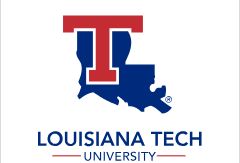Date of Award
Spring 1999
Document Type
Dissertation
Degree Name
Doctor of Philosophy (PhD)
Department
Computational Analysis and Modeling
First Advisor
Vir Phoha
Abstract
One of the goals of engineering firms is to bring better products to market faster. Although concurrent engineering can aid in this endeavor, it requires that all areas of an organization work simultaneously. Thus, current product data must be accessible to everyone.
Virtual prototyping allows this simultaneous exchange of information. Virtual prototyping not only replaces the physical model in product development with a virtual model, but also it goes further by allowing data associated with each part of the model to be accessed. This data is not limited to just geometric properties but could contain other quantifiable properties, such as materials, features, and manufacturing notes. Later in the design process, the virtual model could be used for checking for interferences and stresses or for running simulations.
The research presented in this dissertation outlines the development of software that provides a foundation for developing virtual prototyping software at Louisiana Tech University. Microsoft Visual C++ and the Microsoft Foundation Class library are utilized for developing this Windows98 application. OpenGL is used as the software interface to the graphics hardware. Although C++ is used in writing most of the source code, C has to be used when interfacing with OpenGL to display the solid models.
A linked list is used as the data structure for storing the individual objects. Geometric information is stored for each object, but the structure is flexible and extensible so that other information, such as features and functions, can be added in the future. To relate one object to another, a hierarchical tree has been implemented. This tree structure allows the user to specify the “parent-child” relationships that exist in the model.
Several different file formats are available to the user of the software to save and retrieve the objects contained in the model. Foremost of these formats is the DXF format that allows the exchange of data between different graphics packages. Importing DXF files into the application is the typical means of adding objects to the model. The sequential format provided in the serialization process of the Microsoft Foundation Class library allows for saving both object and hierarchy data.
Recommended Citation
Manry, David William, "" (1999). Dissertation. 165.
https://digitalcommons.latech.edu/dissertations/165
Included in
Computer Sciences Commons, Industrial Engineering Commons, Mechanical Engineering Commons

